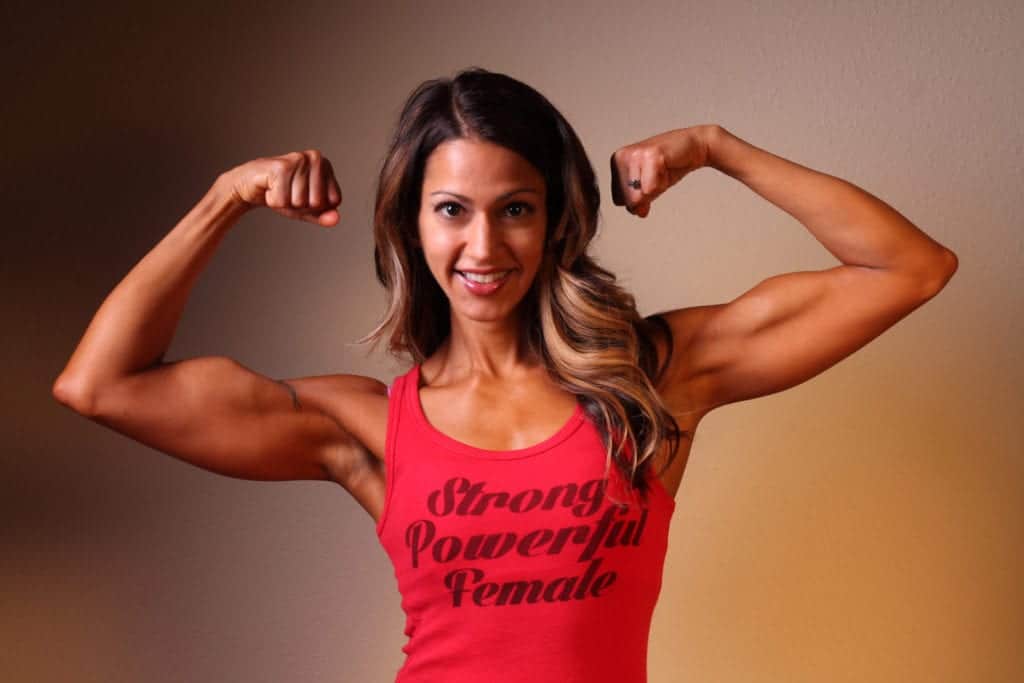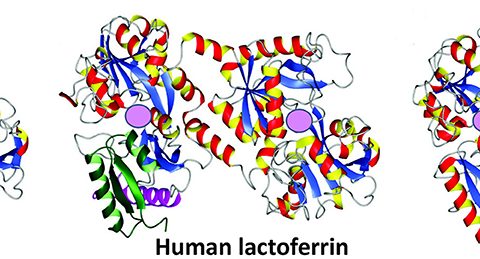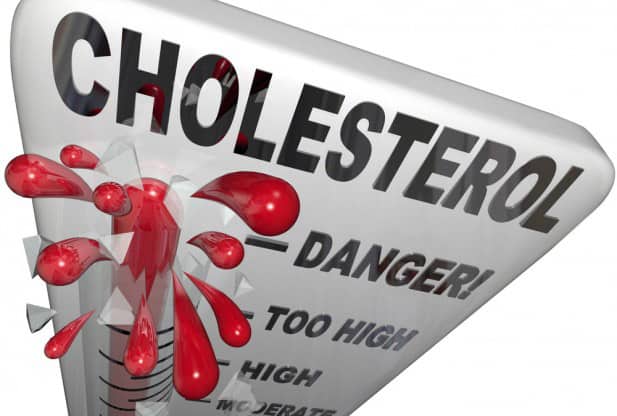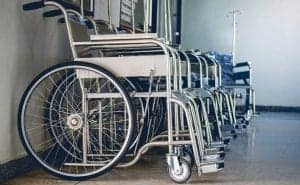Yes, my “hard core” days are over. When I was younger, my priority was getting bigger and stronger, and that was basically it. These days, I’m often experimenting with my own programming in an attempt to find a balance strength, conditioning, and body composition, that fits my schedule, goals, etc. As we age, it’s common our personal priorities change, and mine have too. I’m more interested in overall fitness than I am say adding a new PB to my 1RM to the bench press (have not benched in years, but for sake of example…) and so I don’t tend to worry too much if something I’m doing is not say optimal for strength or increasing muscle mass, if it fits my overall goals. As we age, we often accumulate some injuries, perhaps degenerated discs, or loss of cartilage in joints, and so forth, and have to work with them or around them as quitting is not an option. It may also be time is limited, and or, an increased focus on cardiopulmonary fitness exists. That person may also hate doing aerobic work, like me…I will conclude this section by saying; older I get and the more time I spend in the gym or out, the more I find I benefit from blended programs, or “hybrid” programs, or what some may view as concurrent programing, but more on that later on.

This is a program I have been following recently that checks off the boxes for my needs and goals, your mileage may differ, but it may be something you wanna try for a change, may kickstart some motivation and such. If there’s one thing you learn after decades in the gym is, don’t underestimate motivation! I’ll take a less than optimal program that I’m motivated to do over the most uber modern program I don’t enjoy any day. When I do seminars, and someone invariably asks “what’s the best program or form of exercise?” I will always respond with “the best program is that program you’ll actually follow year in and year out.” Sure, someone who has a specific goal in mind who has been at it some time, there’s approaches they will need to follow to get those results to be sure, but for many, motivation and long term consistency is their major progress killer. They often find themselves in paralysis by analysis in search of the “perfect” program and end up doing nothing in my experience. That’s one reason I recommend finding exercise approaches that keep people motivated vs being the “perfect” program per se, but that’s another topic for another day.
Concurrent Training
Technically, Concurrent Training (CT) is defined as
“… the combination of resistance and endurance training in a periodized program to maximize all aspects of physical performance”
But it’s not really that simple, at least not in my estimation. CT is also tied not as much to methodology per se, but to the goals of the individual. That is, as trainer and coach Chris Woods said “… If the goal of the training cycle is to improve performance markers in both strength and endurance, then it is a concurrent training cycle, regardless of the methodology used” I tend to agree with that assessment, and this program attempts to increase capacity/performance/conditioning and maintain strength and lean body mass (LBM) concurrently. Studies examining the impact of CT on LBM and strength have been conflicting, but general finding would suggest that if the primary focus is on increasing strength and or LBM, CT is probably not the optimal choice, but that’s also not as simple as it sounds as variables such as mode of exercise chosen, volume, intensity of each, etc, are all factors.
Bottom line, if your focus is exclusively on getting stronger and or increasing LBM, the program that follows is probably not the optimal choice. If you’re looking for a science based approach to that, I have some recent comments about how bodybuilders are stuck in the 70’s with a recommendation for an app that gets people on track and keeps them on track, which can be read HERE. The app has gotten great feedback from BrinkZone followers and continues to evolve and improve. Two, I have developed a full CT program which goes into much more depth than the program below HERE if interested.

CT can get complicated with the programming for sure, and people should research that one some more if interested. For example, HIIT may be more problematic to hypertrophy vs strength, and some programs will make all manner of adjustments to attempt to get the best results of a CT program and for competitive athletes, there’s targeted science under the hood. For example, to quote Applied Physiologist at UltraFit Systems Dean Bozzano:
“…we look at blocks of Endurance training utilizing different energy substrates per that chart above. But then we then need to consider opposing physiological adaptations that occur at the peripheral and central levels. HIIT induces high levels of metabolic stress that interferes with peripheral anatomical adaptations, So HIIT does not pair will with Hypertrophy. Yet it pairs better with Strength/Power due to complimentary peripheral vs central adaptations found with Power. But due to overlapping energy systems I would program HIIT after a Strength/Power day so as not to fatigue the energy systems before training reducing risk of injury and increasing Power output and adaptation. There are several combinations like this such as combining hypertrophic resistance training with lower-intensity interval training (LIIT) (75–85% V̇O2max) as Hypertrophy causes acute peripheral adaptations vs LIIT which is more central. As I said the matrix of implementation of CT varies significantly.”
Get all that?! If you didn’t, don’t worry about it. The point is simply to be clear, effective CT programming is not a simple matter of lifting some weights a few days a week and running a few days a week if one wants optimal results as an athlete who requires a blend of physical and performance attributes. As it applies to those athletes that are working with top level coaches, a highly methodical science based approach must be taken to get optimal results per above. I’m not offering anything nearly so well designed and thought out, but I’m not a competitive athlete focused on eking out another 2% in my performance either.
Ok, back to our story. My goals, per above, are more about a balance of effects I want, time management, and doing what keeps me motivated and not incurring injuries/further aggravating existing injuries, maintain strength and LBM, and improve conditioning, and perhaps making some improvements in bodycomp.* If that’s you, read on… I wanted to increase frequency of my exercise while reducing volume of each workout, and getting best bang for my buck so to speak. Because I added regular sessions of SIT, I reduced the resistance training (RT) volume to what I felt I could recoup from, as SIT is very demanding stuff! Most are familiar with High Intensity Interval Training (HIIT), many not so familiar with SIT, and for a full explanation of the difference, and why I tend to prefer SIT, read my article on that topic HERE. SIT/HIIT have some impressive benefits and my goal was to get 2-3 sessions of SIT per week done.
The Program
With that long winded set up and introduction, here’s how the program breaks down.
I like to do some foam rolling before my workouts. I find it loosens me up nicely, and does get some blood flowing and such, without taxing me for the rest of the workout. Some prefer to do it after workouts, some do it on separate days as rehab/prehab work. Me, I like it before workouts.
Basic program:
Schedule, every other day, so Mon, Wed, Fri, Sat is repeat of Mon, and so forth.
Day #1:
Warm up: foam rolling and rotator cuff exercises
10 mins of SIT, chest/back, 6 sets total per bodypart, usually two exercises of 3 sets each (after 1-2 warmup sets), in the 70-85% 1RM range, or 8-12 reps.
Day#2:
Lower Body: warm up, foam rolling
6 -8 sets per body part (hamstrings/thighs), two exercises of 3-4 sets (after 1-2 warmup sets), in the 70-85% 1RM range, or 8-12 reps. Mostly primary compound movements, but prefer exercises that don’t overly load the spine, such as Bulgarian squats.
Day #3:
Shoulders/arms/parts
Same as Day #1 for warm up and SIT. Something of a free for all day, and less volume per bodypart as shoulders and arms get worked directly with chest/back. Typical may be may 3 sets standing presses in the 70-85% 1RM range, or 8-12 reps (after 1-2 warmup sets), standing straight bar curls 3 sets at 70-85% 1RM range, and 3 sets close grip bench 70-85% 1RM range followed by core work, calves, or what ever strikes me and or if there’s energy in the tank. I have a torn rotator cuff hanging by the proverbial and literal thread in the left shoulder, bit of compression in the C7 vertebrae (likely from sitting in front of a computer decades typing away…) and such, and so I’m fluid with the shoulder work as such. Some days it hurts, some days it don’t. I may skip shoulders altogether that day and do some added volume to arms, may do additional core work, may do some KB swings, sled work, what ever, just be creative and keep moving! If an exercise hurts, don’t do that!
Rest between sets for all the above RT work, approx 1 minute.
Specifics of the SIT:
SIT: On a stationary recumbent bike I will do 10 minutes of SIT using a 1m LI/30s HT
LI = low intensity, and HT is the high intensity segments of SIT
For example, on the a stationary recumbent bike the LT is approx. 60RPM per minute and the HT part I can usually maintain between 140 and 145 RPM per minute with the bike set to level III for 30s. I can tell you, those last few seconds can feel like a long time! SIT is a maximal effort that can only be maintained a short period of time. See Linked article above for more on that. Those are not numbers you need to follow per se, they’re what I can do, on that particular machine, and 140-145rpm is literally as fast as my short ass legs and spin those peddles for that short sprint time. SIT can also be done on an upright stationary bike and various stair stepper machines and such. It’s difficult to do on say a treadmill due to the fact you just can’t speed up and slow down treadmills as you can the aforementioned machines. I also prefer the others over treadmills and such as they are non-impactive, another plus if you have say a bad back, knees, or what have you.
Also, if the gym is empty enough to allow super sets, I will super set chest/back, thighs, hams, or bi/tri. If the gym is too full to allow that, I will do straight sets. You can intentionally alternate that approach or do it as the gym allows. Given the choice, I like the supersets.
Off Days:
Days when I’m not doing the above I view as active recovery, so some type of low intensity steady state (LISS) work, such as walking the dog, riding a bike, or swimming, with emphasis on the low intensity aspect. Light stretching, maybe foam roller, yoga, mobility work, etc. A day off to do nadda will happen too if that seems needed, or a trip to the range for some lead therapy…The off day stuff should be done outside when ever possible. On a perfectly nice day, driving to the gym to walk on a treadmill, makes no damn sense. Don’t do that. As much as possible, active recovery stuff should be done outside.
Time frames:
A pretty linear program minus say much in the way of changes in volume, intensity, etc, make sure to factor in a deloading period every 8-10 weeks, where you either take some time off, 5-7 days is typical, and or, schedule deloading periods where you’d cut volume and intensity way back, perhaps 50% on both for a week or so.
SIT Before RT?
I recommend people try it both ways, before the RT work as I do, or after, and see what you prefer. “On paper” studies would suggest after should be superior in terms of not interfering with the strength training work. Personally, I just can’t put the energy required into the SIT work after RT. See which you prefer.
Conclusion
No, this is not a program based on the latest greatest science of exercise physiology, and no, it’s not likely to be adopted by high level coaches and such to train their athletes. But, for some, it may be an easy to follow CT program or sorts that gets decent results in a wider range than their usual workouts, without drudgery of extensive LISS sessions and gets it done in a time efficient manner. I’m also working on a more extensive program of this nature if you try the above and benefit from it. You may also find this program breaths some new life into your time in the gym. Finally, no it’s not just for men or “old guys” and I invite anyone to try it for a change, and for those who have the time, could probably separate their RT and the SIT sessions, but I personally don’t have time or interest to be in the gym that much these days and either do many reading this article.
*= Which really takes place via nutrition and total calorie intakes, which I cover HERE.
Will Brink is the owner of the Brinkzone Blog. Will has over 30 years experience as a respected author, columnist and consultant, to the supplement, fitness, bodybuilding, and weight loss industry and has been extensively published. Will graduated from Harvard University with a concentration in the natural sciences, and is a consultant to major supplement, dairy, and pharmaceutical companies.
His often ground breaking articles can be found in publications such as Lets Live, Muscle Media 2000, MuscleMag International, The Life Extension Magazine, Muscle n Fitness, Inside Karate, Exercise For Men Only, Body International, Power, Oxygen, Penthouse, Women’s World and The Townsend Letter For Doctors.
He’s also been published in peer reviewed journals.
Will is the author of the popular e-books, both accompanied by private members forum access , Bodybuilding Revealed & Fat Loss Revealed.
You can also buy Will’s other books on Amazon, Apple iBook, and Barnes and Noble.







BrinkZone,
Good to see “foam rolling” in there or even perhaps some “percussion therapy”! Really helps get get things moving and stimulates the nervous system…. Thanks!
Foam rolling is great stuff. See also my article on the Rumble Roller, which is more aggressive.
I appreciated this article. I am likewise in the “older” category. Years ago, like many, I looked for the “best program.” I finally realized that the search for a perfect program was a fool’s errand. The number of programs out there is legion, which only leads to confusion and demotivation.
So, with age, I finally came to my senses. The first step was to clearly define my personal goals for exercise, including how much time I was willing to commit, such that I could maintain consistency and stay motivated. There were more important things in life to me than living in the gym. Given time constraints, I quit paying attention to all the hype and put together a program that works for me. That program is not “optimal” and certainly won’t turn me into the baddest ass in the gym. But it works for me. I continue to experiment on myself by changing things up occasionally, and that keeps it interesting.
I’m competing against no one but myself, and I continue to make gradual progress over time. That’s motivational.
From what you’re saying, sounds like you may wan to try this workout.
Will, for the SIT, can walking/sprinting on an open track outside be sufficient to do? Thanks
Why no mention of Prowler sled work?
Only a single mention of Prowler sled work; I’m surprised since you wrote an entire book extolling the amazing benefits for nearly everyone.
Mostly because few have access to them.
Hi Will. For Monday’s exercises, (“chest/back, 6 sets total per bodypart, usually two exercises of 3 sets each”). Which specific exercises are you using currently?
Usual basic stuff using as much muscle as possible, while keeping in mind my own issues and injuries, which may be different for you: various machine presses for chest, incline dumbbell presses, weight dips if my shoulder will tolerate it, etc. Chin ups, bent over rows, trap bar dead lifts, cable rows, etc, just the usual multi joint best bang for the $/effort stuff.